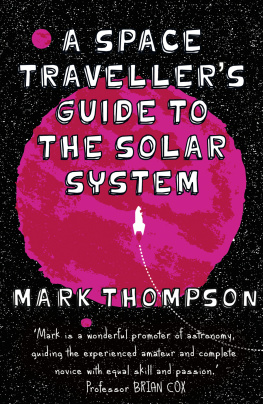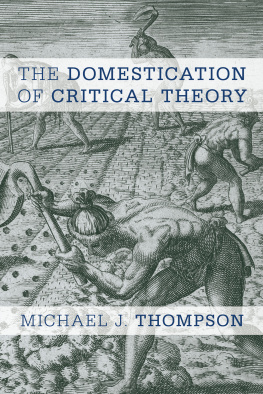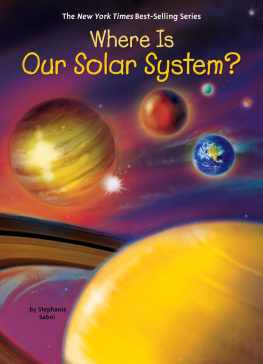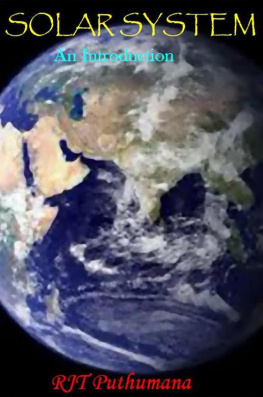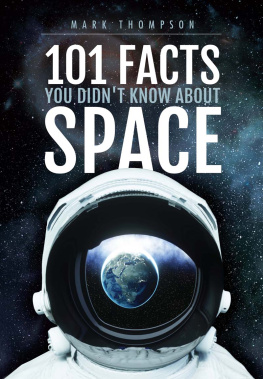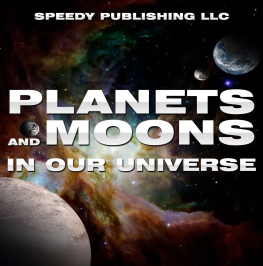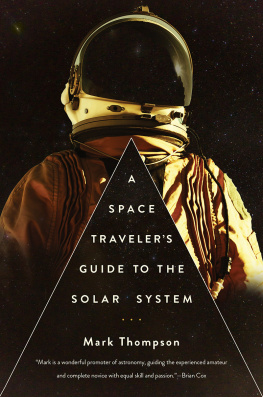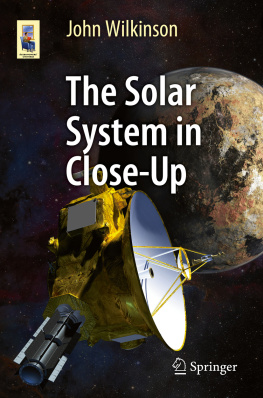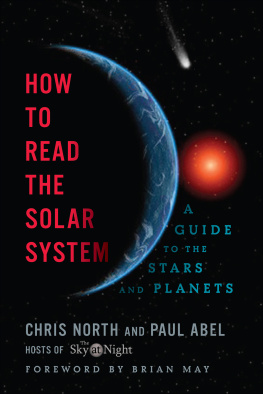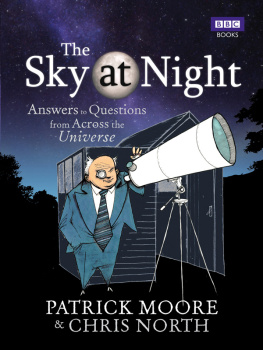Contents
About the Book
Have you ever dreamt of being an astronaut, travelling through the Universe on your very own space mission?
What would it be like to tour the Solar System, visiting the Sun and the planets, taking in everything from moons to asteroid belts along the way?
What would you see, and how would you feel? What would you eat?
How would you navigate and produce fuel?
How would you survive?
On this epic voyage of discovery, astronomer Mark Thompson takes you on that journey. From how to prepare for take-off and the experience of leaving Earths atmosphere, to the reality of living in the confines of a spaceship and the strange sensation of weightlessness, A Space Travellers Guide to the Solar System is an adventure like no other.
Suit up, strap in and enjoy the ride.
Also by Mark Thompson
A Down to Earth Guide to the Cosmos
For more information on Mark Thompson and his books,
see his website at www.markthompsonastronomy.com

TRANSWORLD PUBLISHERS
6163 Uxbridge Road, London W5 5SA
www.transworldbooks.co.uk
Transworld is part of the Penguin Random House group of companies whose addresses can be found at global.penguinrandomhouse.com
First published in Great Britain in 2015 by Bantam Press
an imprint of Transworld Publishers
Copyright Mark Thompson 2015
Mark Thompson has asserted his right under the Copyright,
Designs and Patents Act 1988 to be identified as the author of this work.
Every effort has been made to obtain the necessary permissions with reference to copyright material, both illustrative and quoted. We apologize for any omissions in this respect and will be pleased to make the appropriate acknowledgements in any future edition.
A CIP catalogue record for this book is available from the British Library.
Version 1.0 Epub ISBN 9781448171651
ISBN 9780593073339
This ebook is copyright material and must not be copied, reproduced, transferred, distributed, leased, licensed or publicly performed or used in any way except as specifically permitted in writing by the publishers, as allowed under the terms and conditions under which it was purchased or as strictly permitted by applicable copyright law. Any unauthorized distribution or use of this text may be a direct infringement of the authors and publishers rights and those responsible may be liable in law accordingly.
1 3 5 7 9 10 8 6 4 2
To my mum and dad, who tirelessly supported my childhood dream to reach out among the stars.
Introduction
WHEN I WAS a boy of ten I was taken along to the local astronomy society by my father and on that cold frosty January night almost thirty years ago I saw something that changed my life. As I took my very first peek through a telescope I was greeted by a view of the mighty Saturn, hanging in the inky black depths of space. I could see the delicate hues of the belts on the planet, the rings encircling it, and a moon or two as well. It was an incredible sight, and to this day I have never seen another view that has left quite such an impression on me. During that short encounter it felt as though I had been transformed into an astronaut and was in orbit around an alien world. It was magical. My childhood following that experience was often filled with boyish dreams of becoming a spaceman, and I spent much of my youth working on projects that I hoped would help to fulfil my ambition of flying around the Solar System, taking in strange new worlds and distant moons. But I was not alone. As I was making cardboard rockets, tinfoil space suits and papier-mch helmets, millions of other children were at home doing the exact same thing.
Dreams of becoming an astronaut have been common among children ever since 20/21 July 1969, when families the world over were huddled around their television sets watching Neil Armstrong and Edwin Buzz Aldrin land on the Moon and become the first men to walk on its surface. Millions were transfixed by the hazy, flickering footage being beamed live from over a quarter of a million kilometres away. Watching those brave explorers, the first humans to set foot on extraterrestrial soil, excited children; they wanted to be those men, to journey into the unknown and explore different worlds. Suddenly space travel was not just the stuff of science fiction but a reality, something tangible and achievable. Even now, decades later, the story of Armstrong, Aldrin and Mike Collins, who stayed in the command module of Apollo 11, continues to inspire countless children who dream of reaching out to the stars.
And these dreams of space exploration arent just confined to youngsters. As we grow up we may loosen our grip on the desire to become astronauts, but there are plenty of other ways through which we channel our deep-rooted fascination with the alien and the unknown. There are examples scattered through history; poets, authors, artists and musicians have produced many works based on the Universe around us. You only have to think of the beautiful orchestral pieces by Gustav Holst inspired by the planets or the plethora of science fiction stories and films to see that astronomy reaches out to people in a way no other science does. We have always been fascinated by the unfamiliar, largely because it allows our imagination free rein to conjure up all sorts of weird and wonderful fantasies. Alien worlds and their potential inhabitants are the epitome of this, and the dream of space exploration has been a part of human culture for many years. Be it through fear or fascination, it has also proved to be a unique way of bringing people together, as the photographs from NASAs Apollo era demonstrated. Not only did the images give us a new view of the Moon, they also gave us a fresh perspective on Earth. Who can fail to be humbled after seeing pictures of our fragile planet hanging in the dark, cold, lonely depths of space?
Out of my childhood dreams and games grew an interest in astronomy and the Universe that has followed me into adulthood, along with questions and ideas that have been bubbling around in my head for many years. I have always wanted to see my home, planet Earth, from space and to learn more about its relentless orbital dance with the Moon. I dream of heading to Mercury and Venus, and to the Sun to learn how it works and see just how close it is possible to get to those incredible temperatures. I want to know if it is possible to survive one of the sandstorms on Mars, or to navigate through the dense rocks of the asteroid belt as I approach the realm of the gas giants. Would it be possible for me to fly through the eye of Jupiters Earth-smashing hurricane, which I have seen through a telescope on many occasions, and are the rings of Saturn really made up of billions of pieces of rock and dust?
Approaching these questions from a theoretical perspective, I often give lectures to others like me who are in awe of the Universe. Children are regularly in the audience and it never ceases to amaze me how wonderfully insightful their questions can be. I recall a child of about ten years once asking me, What shape is the Universe? Thats a fantastic question to come from an adult, and I was surprised to hear a child ask it. It just shows that we all have probing thoughts and unanswered queries about worlds beyond our own. In some ways, I think the wonderment of children is analogous to that of our ancestors as they slowly became aware of the Universe around them. Sadly, I think a lot of adults tend to lose this fascination with the natural world; but that one question made me realize that trying to understand the secrets of space brings us all together. Certainly everyone else in the room with that ten-year-old boy was waiting for my answer. Whatever your age, we are all on this journey of learning and discovery together.

